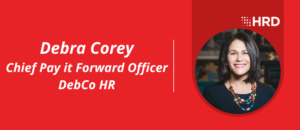Workplace benefits – what’s beyond pay, pensions and annual leave?
- 6 Min Read
For employers looking to offer a broader range of workplace saving products, to improve employee financial resilience or just offer more flexible saving, the options are wider than you might expect. And they have several additional benefits that pay and pension don’t cover..
- Author: Dale Critchley
- Date published: Jul 8, 2019
- Categories

Free fruit, an onsite gym, employee discounts…
There are a growing number of workplace benefits that employers are now having to consider.
But the one that will be universally attractive to almost your entire workforce is…..pay.
Yes, many people love their job and aren’t in it for the money. But if you took the money away, would they still be in work on Monday morning? Unlikely.
After pay, many people will look to the pension being offered by an employer. An Aviva survey found that, of those interviewed over 84% said that the company pension scheme would be an important or very important consideration when considering a new employer.
Auto-enrolment has introduced an extra 10 million workers to pension saving so there is heightened interest in what businesses offer beyond the minimum contributions. But, with all businesses now offering a workplace pension, it can be a limited way to stand out from the crowd when trying to attract and retain talent.
ISAs
Most people are pretty familiar with ISAs or ‘Individual Saving Accounts’. What many people probably aren’t aware of is that they are often available through the workplace.
More modern pension providers have recognised that employee saving needs to extend beyond pensions and offer ISAs on the same platform as their pension.
This has several advantages for employees.
1. Employees can pay into their workplace ISA direct from payroll. For those employees who might otherwise struggle to save, the “you don’t miss what you’ve never had” principle can make a real difference.
2. Managing pension and ISA savings on the same platform means you can take a quick look at your financial situation without the need to bounce from one app or website to another with multiple log-ins.
3. Higher earners, who may be in danger of breaching the annual or lifetime allowance for pension contributions (currently set at £40,000 and £1,055,000 respectively), can use a workplace ISA as a home for additional retirement savings, which could otherwise attract a tax charge of 55% or more.
Cash ISAs can have very low-interest rates, which can mean that inflation outstrips them. They’re no-risk though, which means they make sense for short term saving or for relatively small amounts of ‘rainy day’ funding.
For employees on lower incomes having this kind of saving to fall back on not only improves their financial resilience but can contribute to general well-being too.
Stocks and shares ISAs allow employees to choose an investment strategy for their savings that could provide greater growth than a cash ISA, but the value of the investments can go down as well as up and employees could get out less than they put in. This is an ISA designed for more long-term savings, such as to augment a pension.
Lifetime ISAs can be either stocks and shares or cash and are only available to employees aged under 40. They benefit from a government top-up equivalent to basic rate tax relief on a pension. Unlike other ISAs there is a penalty if you take money out prior to age 60, other than to buy a first home.
ISAs have a good brand image, they’re accessible and are tax efficient.
However, employers can’t contribute directly to an ISA. Any ISA payment made through payroll needs to be taxed as income and is subject to employer and employee national insurance.
As the money going into an ISA has already been taxed, the growth and subsequent withdrawals remain tax-free.
General Investment Accounts (GIA)
GIAs may not be as familiar as ISAs but they are often available alongside them on a workplace pension platform, allowing employees to take advantage of lower charges and straight forward administration.
The main difference between a GIA and an ISA is the tax treatment. In a GIA any profits made from investments above relevant tax-free allowances is taxable. A capital gain of up to £12,000 per year can be made tax free, and dividend income of up to £2,000 is also tax free.
These allowances mean that reasonably substantial sums can be invested in a GIA before any tax is payable, and unlike ISAs, there are no annual investment limits.
A GIA is largely of benefit to higher earners who’ve reached their annual pension and ISA limits but are looking to make the most of their tax allowances. That may be either in the long term, or in the short term e.g. to hold investments until the new year’s ISA or pension allowances become available.
As with an ISA, any payments from an employer must be treated as taxable pay prior to them being invested in a GIA.
Workplace Loans
So far we’ve talked about saving, but unsecured debt is a reality for most adults in the UK.
Borrowing money through your employer may sound strange, but it is a workplace option which is growing. It’s estimated around three million UK workers now have access to loans through their employer.
The loans are made by a third-party regulated credit firm, with the employer acting as an introducer. But there are benefits for the employer and employee in this arrangement.
· For employees, the loans will typically carry a lower interest rate than a personal loan they can find at a bank or other lender. On top of that, the repayments are taken directly from payroll, so they don’t need to worry about setting up direct debits or moving money around.
· For employers, providing access to a loan could really improve employee wellbeing. Money worries are a major cause of stress and mental health issues, impacting performance at work and increasing the risk of long absenteeism. If that stress can be removed, or at least lessened, then it’s a positive for the employee and their employer.
The workplace benefits landscape is shifting. The traditional pay, pension and holiday will likely always be at the top of most people’s lists. But beyond that employers have choices to make.
I’m not convinced ‘pawternity leave’ (yes, time off when you get a new pet) will catch on anytime soon. But offering employees a wider range of savings products through the workplace appears to be here to stay.








